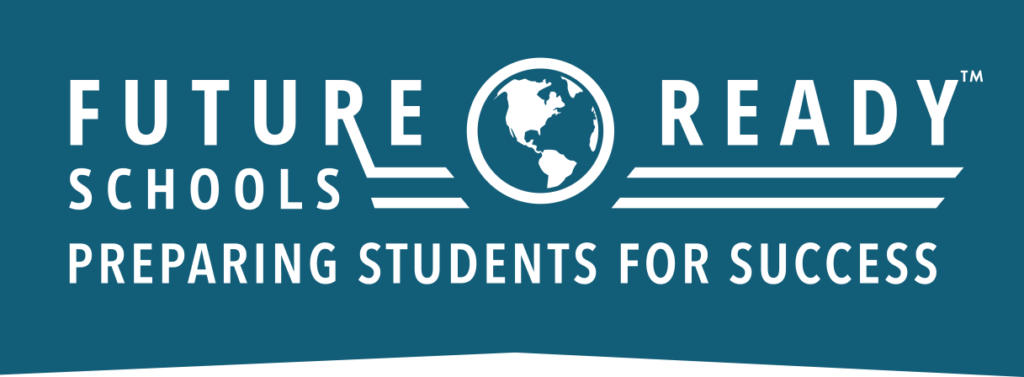Contact Information
Future Ready Wyoming
The Digital Learning Plan (as described in Wyoming Statute 21-2-202 (a)(xx)) was developed to better provide equal access to education through technology. To address the Digital Learning priorities the Future Ready Framework was adopted to organize the Wyoming’s Digital Learning Plan. To learn more about the Digital Learning Plan you can visit the DLP page here.
The Wyoming Department of Education is dedicated to ensuring student success in career, college, and military through the effective implementation of personalized learning. The Future Ready Schools ® pledge helps district leaders plan and implement personalized, research based digital learning strategies so all students can achieve their full potential. By becoming a Future Ready state, Wyoming educators will have access to tools and collaboration opportunities to assist districts and schools to move quickly towards personalized student learning, which will improve the overall educational experience of all students and keep student learning at the heart of all planning and decision making.
Monthly Newsletters
- February 28, 2019 Newsletter
- March 28, 2019 Newsletter
- April 29, 2019 Newsletter
- May 28, 2019 Newsletter
- June 28, 2019 Newsletter
- July 29, 2019 Newsletter
- August 28, 2019 Newsletter
- September 27, 2019 Newsletter
- October 28, 2019 Newsletter
- November 26, 2019 Newsletter
- December 27, 2019 Newsletter

Future Ready Framework
The Future Ready Framework ® was designed with Collaborative Leadership as the essential piece in creating an innovative and engaging school culture. The Framework identifies 7 key categories, or gears, designed to ensure a successful conversion from traditional to personalized learning. These include:

The benefits of becoming a Future Ready state are numerous and include free access to tools and resources that assist district leadership teams plan systemically to use technology more effectively to engage students, empower teachers, and improve overall learning outcomes. The list of benefits includes, but is not limited to:
- Access to the “Future Ready Hub” (quality research-based instructional materials located on the Future Ready website)
- Future Ready Regional Summits and Workshops
- Free Professional Development Webinars and Chats
- Interactive Planning Dashboard
- Extension Programs directed at assisting with transitioning districts to Future Ready learning environments
- Future Ready Mentor program
- Collaboration with surrounding Future Ready state programs and leaders
- Free Professional Learning Opportunities
- Consultant services assisting districts in aligning to the Future Ready Framework
Focused Frameworks
The following frameworks were developed to complement FRS district planning. All FRS frameworks serve as the basis for programming for FRS district leaders, FRS Principals, FRS instructional coaches, FRS tech leaders, and FRS librarians. These frameworks will help educators in similar positions share expertise and leverage the power of the FRS networks.
To view all the frameworks click here.
Future Ready Toolkit
Learn how school districts in Wyoming can utilize the seven Future Ready gears through the Future Ready Schools (FRS) interactive planning dashboard to assess their district’s needs, identify gaps, obtain strategies, plan, and track their progress over time.
Implementing meaningful learning requires more than purchasing devices for a school district; it requires thoughtful planning, preparation, and analysis of student outcomes, teacher development, culture, and leadership. This is where the FRS interactive planning dashboard can help. The dashboard takes school district leaders through each step of a systematic planning process to create a comprehensive approach and action plan for implementing digital learning before they make the next purchase, ensuring a smooth implementation.
Join the FRS Network
The WDE took the statewide Future Ready Pledge in September of 2016. By taking the pledge superintendents make a firm public commitment about their efforts to implement innovative learning practices to support teachers and students within their district. The pledge is just the first move in the FRS process.
The Five Step Planning Process is designed to help educators with creating sound, research-based action plans for implementing personalized student-centered learning. Embarking on this work takes leadership, time, patience, courage, collaboration, trust, and some trial and error to get it right. With that in mind, this planning tool guides district teams through collecting and analyzing data on their readiness across each gear in the Future Ready Framework, identifying specific strategies and next steps for implementation, and producing a comprehensive action plan for implementing their specific initiative.
Step 1
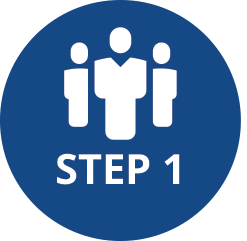 Assemble a Future Ready Schools Planning Team
Assemble a Future Ready Schools Planning Team
Strong leadership is essential to systemic, sustainable change in education. Superintendents and their leadership teams, with the support of state and local leaders, are key to leading the transition to digital learning in their districts.
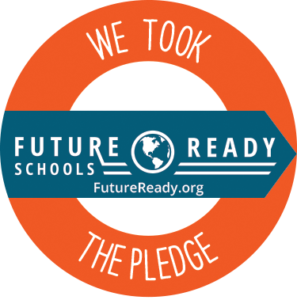
Your district has taken the Future Ready Pledge and you are now ready to create a research based action plan for implementing personalized student-centered learning.
Task 1:
Your district will need to identify a “(FRS) Project Manager” who will schedule meetings, send reminders, assign responsibilities, and move the planning process along as the team leader. His/her name will appear on the “Create and Manage Teams” webpage page as the primary contact for the district. The FRS Project Manager is also responsible for cultivating a FRS Planning Team for the district.
Task 2:
Your district leadership team should include a minimum of eight (8) members but no more than fifteen (15), depending on the size of the district. Choose team members who can assist with collecting information, setting goals, and creating an action plan for the district. Members of the FRS Planning Team are forward looking. They think about what the landscape looks like in the future and plan towards these scenarios. This team should be comprised of the most talented people in your district; they are not merely there to row, but also to help you steer. A team comprised of people with distinct talents and perspectives is also less likely to succumb to ‘group think’ and will engage in honest and open dialogue.
Recommended types of team members include the following:
- Superintendent
- Assistant superintendent
- School board members
- Community and/or business leader
- School-based edtech leaders or instructional coaches
- Finance or business officers
- Teachers
- Principals
- Librarian/Media Specialist
- Directors of professional learning
- Directors of curriculum, instruction, and assessment
- Director of education technology/chief information officer
- Parents/Guardians
- Union leaders
- Middle or high school students

Watch this video tutorial provided by Future Ready to learn more about assembling your districts team.
Task 3:
To access the Future Ready dashboard you will need to create a username and password. Accessing the dashboard is simple. To create a login, complete the user profile with your name, email, and additional information about your district.
Watch this video tutorial provided by Future Ready for assistance in creating an account.
After logging in, click “create and manage teams” in the menu section to access your district’s team code. The team code will be used for your district specifically and will allow others on your team access.
Using this code and the email template, invite leaders you have selected to be members of your FRS planning team.
Watch this video provided by Future Ready for a tutorial on how to create and manage a team on the dashboard.
Task 4:
Schedule an initial team meeting. In this meeting you will:
- Establish a Vision of the team
- Review the Mission and Vision of the District
- Review the seven (7) Future Ready Gears
Step 2
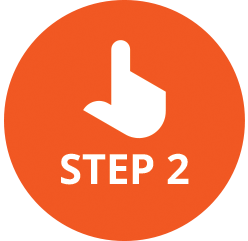 Measure District Readiness
Measure District Readiness
Task 1:
Distribute a copy of the self-assessment, so each member can think through the items and select responses that resonate with their understanding of the district.
Task 2:
Take the District Leadership Self-Assessment as a Team (Estimated time: 1.5-2 Hours)
In this task, your team will take the assessment. Schedule a meeting with your FRS planning team. It is recommended to have a facilitator for this meeting that is not part of the FRS planning team. This will ensure the team stays on track and can focus on the questions instead of navigating the system. Use one computer connected to a projector so the team can read and discuss each question before the answer is submitted. The full assessment process takes between an hour-in-a-half to two hours, depending on the length of the discussion. The facilitator should encourage all participants to voice their opinions, especially if they disagree. An imperative part of the planning process is to create an environment where a culture of respect and trust is the norm. This assessment is not intended to be completed by a single person; responses should be representative of many voices.The facilitator will walk through each question and input the answer once consensus has been reached. Upon completion, the facilitator will be the only one to submit the assessment.

Pro Tip: It is recommended to provide donuts, cookies, cupcakes, dinner or other snack items and caffeine to entice great discussion.
Watch this video tutorial provided by Future Ready.
Task 3:
Analyze and Discuss the District’s Readiness Report (Estimated time: 1 to 1.5 Hours)
The results usually populate within 20 minutes of submitting the assessment. But it is probably best to schedule a separate meeting to review the report as a group. FRS project managers are encouraged to export the report to a PDF format and distribute it to the district leadership team.
While analyzing the results, district teams should work collaboratively through the following guiding questions:
- Do the overall readiness scores reflect where you thought you were as a district?
- Which results were most surprising? Which results confirmed your thinking?
- What is our district doing well and what needs improvement based on this readiness level?
- What other stakeholders should join the conversation for each of the gear areas?
- For which FRS gear does the district have the most leverage to make improvements?
In this meeting, it is also recommended to appoint a FRS Planning Team Member to oversee a gear. This team member will help facilitate the stakeholder assessments in Step 3.
- Curriculum, Instruction, and Assessment.
- Personalized Professional Learning.
- Budget and Resources.
- Community Partnerships.
- Data and Privacy.
- Use of Space and Time.
- Robust Infrastructure.
- Collaborative Leadership.
Make sure to keep the Future Ready Gears handy for review as you look at the results and review the guiding questions.
Step 3
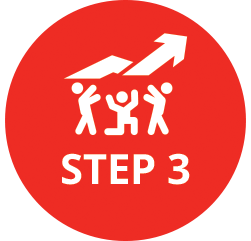 Gather Input from Stakeholders
Gather Input from Stakeholders
This step is optional, but the benefits of completing this step will:
- Increase awareness of your thoughtful, comprehensive planning throughout the district.
- Provide a more comprehensive district snapshot that can be reviewed by role.
- Provide additional depth of analysis on your district’s readiness.
- Generate detailed reports on each FRS gear;
- Provide an opportunity to compare the perceptions of stakeholder group(s) to the district leadership team with consolidated reports.
Task 1:
Identify Stakeholders to form the district gear-level assessment team (estimated time: 30-60 minutes)
You will need to identify stakeholders to form the District’s Gear-Level Assessment team. Individuals you choose for this team will serve as a group of education stakeholders who provide critical feedback on your district’s readiness across each FRS gear. Your next FRS district leadership team meeting should focus on identifying educators from who your team wishes to receive feedback on the seven unique gear assessments. Here are suggestions on types of leaders to include for each gear:
- Curriculum, Instruction, and Assessment: Additional district level colleagues, teachers, principals, school librarians, school board members, parents and/or students.
- Personalized Professional Learning: Additional district level colleagues, teachers, principals, school librarians, school board members.
- Budget and Resources: Additional district level colleagues, and/or school board members.
- Community Partnerships: Additional district level colleagues, school librarians, school board members, community leadership, and/or parents.
- Data and Privacy: Technology staff, additional district level colleagues, and/or school board members.
- Use of Space and Time: Additional district level colleagues, school librarians, teachers, principals, school board members, parents and/or students.
- Robust Infrastructure: Additional district level colleagues, school board members, and community leaders.
- Collaborative Leadership: Additional district level colleagues, principals, school librarians, and school board members.
This task should yield a list of stakeholder names and emails to request completion of a short gear-level assessment. Your team should also agree on a timeline for when assessments should be completed.
Please note: this gear assessment is specific to leadership capacity and is different than the district-level leadership self-assessment taken in Step 2.
Task 2:
Assemble gear-level assessment team and send surveys (estimated time: 30 minutes per gear)
Once your team has been identified, invite them to participate in the gear level assessment. Use of a copy of this template to generate your email for each gear survey. As invitations are prepared, send them only to the assessment team assigned to that specific gear.
It is most powerful to generate feedback on all gear surveys, however, each district leadership team is advised to choose the gear(s) that most align with your district’s planning needs.
To obtain an anonymous URL for each FRS gear survey, complete the following in the Future Ready Dashboard:
- Click “Engage Stakeholders” on the menu.
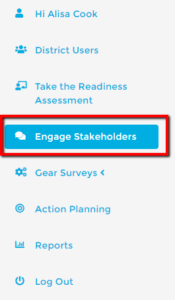
2. Copy the appropriate gear survey URL for the group from which you are soliciting feedback and paste it into the email.
![]()
3. Repeat these steps for each gear.
Task 3:
Track Stakeholder feedback and generate reports (estimated time: 1 to 1.5 hours)
The district’s FRS project manager or any member of the leadership team can track responses from stakeholders by clicking “Engage Stakeholders” on the dashboard menu. The number of completed assessments for each gear will be displayed below the anonymous link.
To review results from each gear assessment, click “View Report” next to each assessment link. You will be prompted to create a consolidated report for each gear assessment, which compares the outcomes of the gear-specific assessment to that of the district leadership self-assessment. Consolidated reports allow the team to analyze the differences between how your stakeholders view readiness in the district compared to the FRS leadership team. They may also reveal potential areas to address as your team creates goals and strategies in Step 4 of the planning process.
Step 4
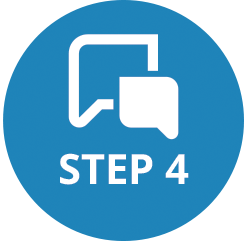 Create a Future Ready Action Plan
Create a Future Ready Action Plan
Task 1:
Set a Timeline and Assign Gear Level Leaders
Future Ready Leadership Teams should collaborate to identify a:
- Timeline for completing the Future Ready Action Plan.
- A gear leader for each gear in the Future Ready Framework that the district is going to prioritize in their action plan.
A comprehensive action plan requires a series of weekly meetings to plan each gear, identify goals, and select strategies for implementation.
Select gear leaders who will have a strong understanding of the content for each Future Ready gear and is willing to write the vision and goals for their gear.
Action plans can have a more direct focus (e.g., tackling only one or two gears), or have an intensive work plan for each of the Future Ready gears. Use the dashboard to create an action plan that fits specific district needs and priorities. Here’s a Sample FRS Action Plan.
Task 2:
Write the Introduction and Use Evidence to Set Goals
The system automatically creates an action plan template associated with the District Leadership Self-Assessment that was completed in Step 2.
Click “Action Planning” in the menu, select the team’s plan, and follow the prompts to complete the introduction section. As a team, create and critique the language used to complete each component of the introduction (e.g., statement of leadership, background, and theory of change).
The dashboard pulls in all the data collected in the previous steps and conducts a gap analysis to recommend next steps for implementation. Select the gears that the district will prioritize in the plan. Each gear leader will analyze the district’s readiness level for the gear elements and create a draft vision statement and goals to be reviewed by the Future Ready Leadership team in the next meeting.
Pro Tip 1: Use team building activities on vision setting and strategic planning to identify the appropriate language for completing the introduction setting of the action plan.
Pro Tip 2: Each gear should include at least three goals to support the vision, but could include an unlimited number depending on the scope of each goal and the district’s approach to the Future Ready Action Plan.
Pro Tip 3: Stagger meeting times and benchmarks for completion of each gear section. The time between meetings gives the leadership team the chance to review each FRS gear in the action plan and be prepared with suggestions for improvement. Districts should plan to review one to two gear sections in each meeting to avoid “information paralysis.”
Task 3:
Select Strategies to Support each Goal
This task can be completed as a group activity, or by individual gear leaders and then discussed as a team. Use this opportunity to collaborate as a team, set goals, and select from hundreds of practitioner created strategies.
Pro Tip 1: Goals can correspond to an unlimited number of strategies; however, teams should be careful not to set unrealistic expectations for implementation. Balance the relationship between a number of strategies and timeline associated with each goal to ensure the plan is practical.
Task 4:
Evaluation and Communication
Continuous improvement and evaluation are essential parts of successful implementation. In the final section of the action plan, the leadership team should discuss plans for assessing the fidelity of implementation, measuring outcomes of the change effort, and monitoring progress. It is also important to outline outreach strategies for keeping stakeholders engaged and to assign the role of accountability to different members of the team.
Pro Tip 1: Consider using existing processes within the district for measuring change. For example, teacher and staff surveys, parent meetings, etc. are often ways to gather feedback. If the expectation is that the change effort will impact student outcomes, list formative or summative assessments being used in the district as tools for evaluation.
Step 5
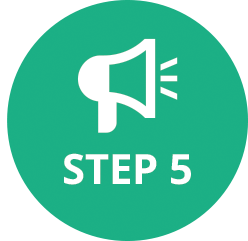 Address, Assign, Export, and Share
Address, Assign, Export, and Share
Task 1:
Review by Gear and as a Team Assign Tasks (estimated time: 30-90 minutes per gear)
This portion of the process can be done independently among gear leaders. The goal for this task is to develop a full section of the action plan reflecting on stakeholder input, in-depth goal setting, strategy review and allocation of responsibilities.
Recommended Process:
- Each gear manager should monitor the gear section for which they were responsible in the “Assign Tasks” section to ensure all of the desired goals and strategies are included. This may include adding new goals or strategies to address the stakeholder input received in Step 3 in meaningful and substantive ways.
- Each gear manager should fill in the responsibilities, timeline, expected budget, and any pertinent notes for each goal before the plan is complete.
- The Future Ready Project Manager should meet with each gear manager to review each gear-specific section of the action plan.
- As a team, review the action plan in its entirety to identify inconsistencies, missing pieces, or necessary alterations.
Task 2:
Export, Customize, and Jazz up the Plan (estimated time: 30 minutes)
It’s time to export and celebrate the Future Ready Action Plan. Once complete, teams are able to download the action plans as a text-based (.rtf) file. As such, action plans can easily be edited in whatever way best serves the leadership team. Use the text file as the “guts” of the plan and customize it by adding a district logo, infographics, images, etc. This information can now be used as the digital learning transformation guidelines, as part of the strategic or comprehensive planning process, for budget needs, future district visioning, and for implementing the Future Ready Action Plan.
Recommended Process:
- Click on “Action Planning” in the Menu.
- Click “Review and Export”.
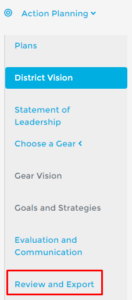
Task 3:
Share, Connect, and be Recognized Nationally (estimated time: TBD by district’s desired involvement)
The action plan is something for which the district should be extremely proud. Share it internally and with stakeholders – letting them know how to stay up-to-date with the latest progress. Also, make sure to stay connected through the Future Ready Website where districts can get help with gear-by-gear implementation any time along the way. Please support the Initiative by sharing promising strategies with other districts – send Future Ready a note using the “Help” button throughout the Dashboard. Finally, don’t be shy. Suggest improvements to the Dashboard and if willing, share the districts plan with Future Ready so they can celebrate the success!
